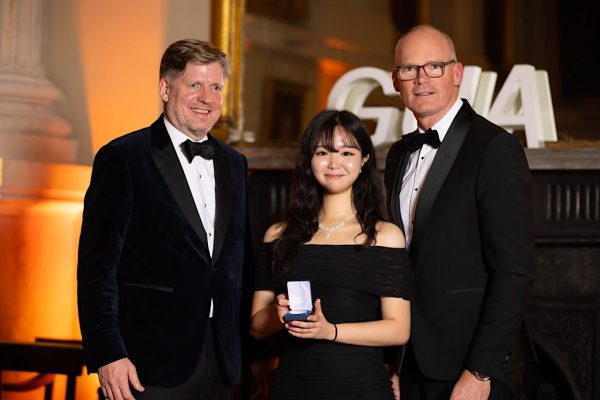Supercomputing group receives $110m grant
The interior of one the Blue Waters super computers on July 12.
Sep 7, 2016
A network of supercomputers funded by the government may sound like something out of a science fiction novel, but it’s happening right here on campus.
As part of a coalition of 19 different universities, the University received a $110 million grant from the National Science Foundation (NSF) to continue funding the Extreme Science and Engineering Discovery Environment, also known as the XSEDE program.
XSEDE is a national organization that brings the potential of the country’s most powerful supercomputers to researchers. The program first received funding for five years in 2011 from the NSF and since has become an important tool for scholars around the nation.
The program is mostly about making it easier for researchers of any kind to use supercomputers to aid their task. Whether they’re an expert in computers or a novice, XSEDE can help anyone in their academic investigation, Ralph Roskies, co-director of the Pittsburgh Supercomputing Center, said.
Get The Daily Illini in your inbox!
“We make existing computational people better at what they do, and we bring in a lot more people into the field,” Roskies said. “We’ve had major successes in both areas.”
According to Roskies, a big issue for researchers using supercomputers is that each one is unique in their architecture. Since every computer is designed and built differently, certain ones can do things others can’t, and they all are operated differently. He said that one of the key goals of the program was to prevent this problem and make it easier for researchers to move between different supercomputers.
“The XSEDE organization tries to make it as seamless as possible for people to move their computing tasks between these different resources, so you don’t have to go through a great learning curve after you learn how to use one of these machines,” he said.
XSEDE has aided countless researchers through their superior computing power. Some prominent examples are the discovery of the structure of HIV and the confirmation of the existence of gravitational waves, the latter of which Roskies believes should win a Nobel prize.
But the program has also been able to help researchers in non-scientific fields as well. One example is University Business Professor Mao Ye, who was investigating oddities in the U.S. stock markets. Ye was studying high frequency trading in the stock market; trades that can happen in a fraction of a second. Because of the sheer number of trades occurring, Ye required the use of a supercomputer provided by XSEDE.
“In one month you can get 10 terabytes of data,” Ye said. “If you digitize all the books in the Library of Congress, that’s 10 terabytes. That’s a lot of data. So we have to use the supercomputers to analyze the high frequency data.”
Armed with one of the nation’s most advanced supercomputing networks, Ye was able to analyze what are called “odd-lot trades” — trades involving less than 100 shares. Because such trades were so rare in the pre-high frequency trading days, this activity didn’t actually have to be reported to the Financial Industry Regulatory Authority. Thus, it would appear that the activity didn’t happen at all. The onset of high frequency trading, however, made it possible to exploit this rule.
“We found that, in a high frequency trading world, you can actually slice and dice orders into less than 100 shares,” Ye said. “But you can trade so frequently, that, for example, you can trade, let’s say, 10,000 shares. You can divide that by 200, and you do 200 trades, each at 50 shares. And none of them need to be reported. Each one is 50, but you do that so fast that you can complete that in one second.”
This loophole prevented a staggering amount of trades from being seen by the general public — for example, a whopping 52 percent of Google’s trades were not being reported due to this rule. Ye wrote a paper on his findings, causing both the New York Stock Exchange and the NASDAQ to change their rules, requiring the reporting of odd-lot trades.
Ye credited much of his success to his access to XSEDE computers, which allowed him to compile data significantly faster than an average computer would have.
“It’s essential,” said Ye. “It helps me in getting the results in a reasonable time.”
Ye’s findings, along with countless others, were all due to the first phase of the program’s funding. This new grant, dubbed “XSEDE 2.0,” aims to continue providing these supercomputing resources to the scholars that need them. Yet, Roskies didn’t think it would lead to any fundamental changes in the program.
“I think the second phase of XSEDE doesn’t sound very exciting,” he said. “We’ve done a lot of stuff in the first phase, and as it turns out, we’ve had very good results.”
Roskies also sees the grant as an encouraging signal of society’s increasing notice in the importance of supercomputing systems.
“There are very few awards that are of this magnitude,” Roskies said. “It’s a very important thing; People have recognized that advanced computing, high performance computing is really an enabling technology for many, many disciplines.”






